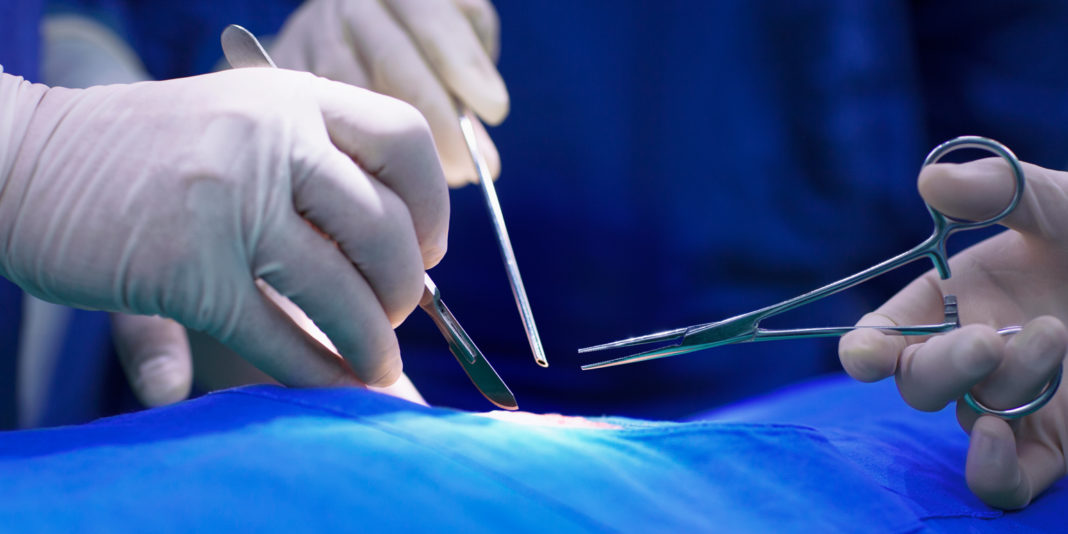An infection in a post-surgery wound can range from irritating to devastating for a patient and can be costly for health services.
The aim of reducing the harm of surgical site infections (SSIs) – and the estimated millions of wasted health dollars through readmissions – led to a targeted SSI monitoring and improvement programme, focusing first on hip and knee replacement surgery, being launched in 2012 in public hospitals across the country.
Because SSIs are the cause of nearly all the healthcare-associated infections (HAIs) in private elective surgical hospitals, the 10 Southern Cross hospitals began much earlier monitoring and reporting results on not one but 10 surgical procedure groupings. An increased focus on the problem saw the Southern Cross SSI rate start to fall and an active quality improvement programme started in 2010 saw the rate fell even further.
Recently published research in the New Zealand Medical Journal (NZMJ)1 shows that the Southern Cross campaign made a significant impact, with the number of patients experiencing an SSI within a month of their surgeries reducing from 3.5 per cent in 2004 down to 1.2 per cent in 2015.
Nurses, particularly the network’s infection prevention and control nurses, played a major role in introducing the interventions, monitoring changes in practice and collecting data on the nearly 43,000 patients whose surgeries were part of the study.
Rosaleen Robertson, Southern Cross Chief of Clinical Governance and a registered nurse, says it was a real team effort and not without its challenges – including getting everybody on board. “It is quite resource-intensive, but when you see the results it makes it all very rewarding.”
The two main evidence-based interventions of the programme introduced in 2010 were delivering pre-surgery prophylactic antibiotics more often at the right time and at the right dose, as well as encouraging a shift on the operating table to using alcohol-based surgical site skin preparation.
Also impacting on SSI rates was ongoing work on hand hygiene compliance, nurse-led pre-admission screening and education, raised awareness of the increased SSI risk for patients who are obese or have diabetes, plus good blood glucose and patient temperature control pre- and post-surgery.
Pre-admission challenges
A particular challenge for private surgical hospital nurses is the tight time frame they have to educate patients about the risks of infection, says Robertson. Most patients come into hospital almost immediately before their operations.
This makes the assessment by pre-admission nurses of the comprehensive patient health questionnaire even more important. The questionnaire is part of a patient’s pre-admission pack and is required to be sent in at least a week before their surgery so any patients with higher needs or greater risks of SSIs can be contacted as early as possible and, if needed, brought in for pre-admission consultations.
Southern Cross engaged with patients using a co-design method to improve how it communicated one piece of pre-admission advice: the request for patients not to remove hair from surgery sites.
“It’s really important that the patient avoids any method of removing hair themselves from their operation site before coming into surgery,” says Robertson. “Any breach of the skin caused by shaving – and they may only be micro-breaches of the skin – can provide an opportunity for pathogenic organisms to grow.”
She says the few patients that do so are generally trying to be helpful, but any hair removal should be left up to health professionals because of the heightened
SSI risk if patients do it themselves.
Although little can be done about some of the SSI risk factors in the usually short lead-up to elective surgery, patients can be educated about hair removal, hand hygiene, pre-op showering and hair washing, and advised that having their diabetes under good control and stopping smoking will help their surgical wounds heal faster.
Obesity, smoking and diabetes
The patients at greater risk of a surgical site infection include those who are obese, smoke, have higher surgical risk scores or have diabetes.
And while the Southern Cross statistics indicate the number of surgical patients who smoked decreased between 2004 and 2015, the numbers who were obese, had high surgical risk scores or had diabetes all increased. The proportion of surgeries on people with a body mass index (BMI) over 30 grew from 29 per cent to 36 per cent of
all surgeries.
The Southern Cross research confirmed the findings of Health Quality & Safety Commission’s public hospital SSI reduction programme, with both finding that obesity is a key SSI risk factor.
Dr Arthur Morris, a clinical microbiologist and lead author of the NZMJ’s Southern Cross article, says while the average SSI rate for orthopaedic surgery is about 1 per cent, if a patient is morbidly obese (a BMI of 40 or more), the infection risk may be four or five times higher. Morris is an infection control advisor to Southern Cross Hospitals and also clinical lead for the Commission’s public hospital SSI improvement programme.
He says for smokers, people with diabetes and the obese the common risk is poor vascular supply affecting their bodies’ abilities to fight any bacterial contamination of wounds. For the morbidly obese, in addition to the problems caused by restricted blood supply to the wound are issues like less mobility and how well the wound edges can adhere to each other.
With an obese person, it can be harder to get the skin edges on either side of the wound to be evenly matched, says Victoria Aliprantis, a registered nurse, who is Southern Cross’s Chief of Risk and Quality. She says that uneven wound edges can create gaps where the skin is not touching, which increases the chance that bacteria can enter the wound and cause infection.
Aliprantis says nurses need to be mindful of the risks and build it into their monitoring and care of wounds post-op. She says that if a wound is not closing particularly well then this should be escalated to the surgeon, but nurses can also use steri strips and other wound care dressings to pull the wound together and improve how the wound edges meet.
Antibiotics use: right time and right amount
For nurses to be as influential as they want to be in reducing SSIs, they need the time to be able perform their roles well, says Robertson.
This includes their important role in supporting the ‘sign-in’ and ‘time-out’ safety checklist procedure in the operating room that includes prompts over the timing of when prophylactic antibiotics are given.
Antibiotics timing is one of the key interventions in the SSI reduction strategy, with the aim of intravenous antibiotic cefazolin being given at the optimal time more often, to ensure enough antibiotic is in the tissue close to the surgery incision site before ‘knife to skin’, says Robertson. The optimal window of time is from one hour before surgery or, ideally, at least five minutes before ‘knife to skin’.
The study found that on-time antibiotic delivery improved from 72 per cent of the time in 2004 to 95 per cent by 2015 and the better timing had helped to reduce the SSI rate. Morris says in the last 10 minutes before ‘knife to skin’ there are many things going on and sometimes ensuring the patient is properly anaesthetised and is breathing properly overrides the timing of the antibiotic. Their new guidelines are now recommending that the antibiotic is given at least 10 minutes before ‘knife to skin’ to avoid it being missed before the focus shifts to critical procedures like intubation.
The right dose of antibiotic was another focus, says Morris, with a recommendation to use 2g or more of cefazolin for every patient to prevent the risk of the increasing number of obese patients receiving a dose that is too low.
Nurses ‘nudge’ shift to alcohol-based skin cleansing
In another of the major interventions – increasing the use of alcohol-based skin preparation – nurses are in key position to influence a surgeon’s choice.
The Southern Cross research confirmed that using an alcohol-based skin preparation can help reduce the SSI rate by almost 50 per cent and is ideal for most operations.
But some surgery areas and some surgeons have protocols that still favour using aqueous-based skin preparations.
Morris says some people are “a bit nervous” about using alcohol preparations as they are worried about a fire risk or a harm.
“Though if it is properly applied and left to dry, there is no risk or danger, but people have their preferences,” he says.
Aliprantis says there is a lot of ritual in theatre and it can be a challenge to ‘nudge’ people who have developed a preference for one method to change to another.
Robertson and Aliprantis say nurses are encouraged to be proactive in starting conversations and presenting the evidence to doctors to encourage them to consider change or to discuss it peer-to-peer with Dr Morris.
The research shows the use of alcohol-based skin preparation increased over the study period from 63 to 84 per cent, but a 2016 audit showed that there is still room for improvement as in 60 per cent of the time an aqueous skin preparation was used, an alcohol product should have been used instead.
Another area where it believes there is an opportunity to further reduce the SSI rate is targeting the most common bacteria causing SSIs – Staphylococcus aureus. A recent literature search for the Health Quality & Safety Commission (HQSC) showed using a proven ‘anti-staph bundle’, involving antiseptic nasal swabbing and antiseptic skin solutions to decolonise S. aureus from the skin and nose could reduce orthopaedic SSIs by about half.
“We are piloting [the bundle] in one of our hospitals that was part of the HQSC bundle collaborative,” says Muriel McIntyre, a registered nurse who is a Southern Cross Clinical Safety Quality Risk Coordinator.
“This is another initiative that is very much a collaborative process with nursing and doctors following through from pre-admission to admission services,” she says.





















